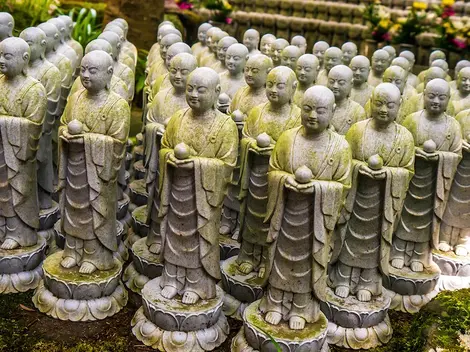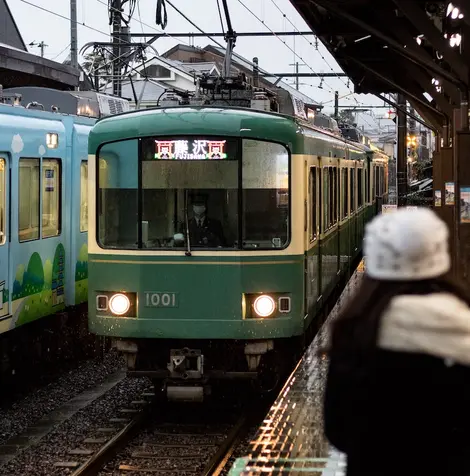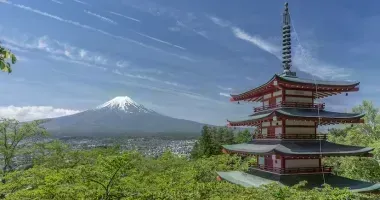Discover Kamakura
The historical city is just one hour away from Tokyo
Kamakura is a lovely town by the sea, with an easy access from Tokyo. It counts 65 Buddhist temples and 19 Shinto shrines, located throughout the town and in the surrounding hills.
Travel from Tokyo to Kamakura
Kamakura is a lovely town by the sea, located to the south of Tokyo. It counts 65 Buddhist temples and 19 Shinto shrines, located throughout the town and in the surrounding hills.
Kamakura became the seat of feudal government in 1192 after the struggle for power between the rival Taira and Minamoto clans was won by Minamoto Yoritomo.
Book now a Kamakura private guided tour.
From Tokyo, Shimbashi, Shinagawa or Yokohama Stations:
- Take the JR Yokosuka Line heading for Zushi, Kurihama or Yokosuka. The JR Lines are covered with a Japan Rail Pass.
- From Shinagawa station, it takes around 45 minutes. Trains depart every 10-15 minutes.
From Shinjuku and Shibuya Stations:
- Take the Shonan-Shinjuku Line from Shinjuku station ou Shibuya station. It takes also around 45 minutes. Direct Trains depart every 30 minutes.
- In Kamakura Station, you can take the Enoden Line to explore the city, go to Hase Station to visit the Hasedera temple or the Daibutsu or travel to Enoshima.
Discover Kamakura
What to see ?
Daibutsu (Great Buddha)
The Buddha is located at Kotokuin Temple. Eleven meters (36 ft.) high, it is the second largestone in Japan. It was cast in 1252 (Open daily, Apr-Oct, 8 a.m. to 5:30 p.m.; Oct-Mar, 5 p.m., ¥200).
Tsurugaoka Hachiman-gu Shrine
The shrine is about a 12-minute walk from the station. It was built by Yoritomo and dedicated to Hachiman, the Shinto god of war. The pathway to the shrine is along Wakamiya Oji, a cherry tree-lined pedestrian path that was constructed by Yoritomo in the 1190s. The path stretches from the shrine all the way to Yuigahama Beach (Open daily, 6 a.m. to 8:30 p.m., free).
Hasedera Temple
The temple is located on a hill facing the sea. On a landing, part way up the steps to the temple grounds, are hundreds of small stone images of Jizo, the savior of children. It is home to an 11-headed gilt statue of Kannon, the goddess of mercy. It is 9 meters (30 ) high and is the tallest wooden image in Japan (Open daily, Apr-Sept, 8:30 a.m. to 5 p.m., Oct-Mar,9 a.m. to 4:30 p.m., ¥500).
Zeniarai Benten Shrine
The shrine is popular among tourists because the waters of a spring in its cave are said to be ableto multiply the money washed in it. The object of worship is a syncretic kami, which fuses a traditional spirit called Ugafukujin with the Buddhist goddess of Indian origin, Sarasvati, knownin Japanese as Benzaiten. The shrine was founded in 1185 by Minamoto no Yoritomo (Open daily, 8 a.m. to 5 p.m., free).















